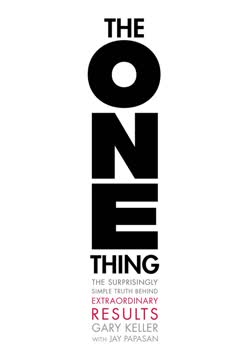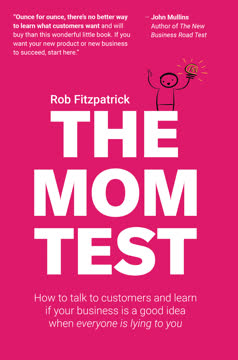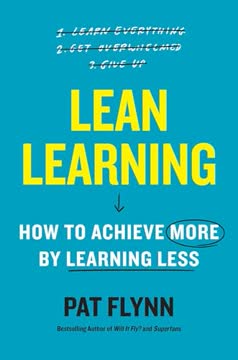Key Takeaways
1. Validate your business idea before investing time and money
"Will It Fly? How to Test Your Next Business Idea So You Don't Waste Your Time and Money"
Avoid costly mistakes. Many entrepreneurs invest significant resources into ideas without first verifying market demand. By validating your idea early, you can save time, money, and effort. This process involves researching your target market, testing your concept with potential customers, and gathering feedback to refine your offering.
Iterative approach. Validation is not a one-time event but an ongoing process. Start with a small-scale test to gauge interest, then gradually expand and refine your idea based on real-world feedback. This approach allows you to make informed decisions and pivot if necessary, rather than committing fully to an unproven concept.
2. Understand your personal goals and strengths before choosing an idea
"A successful entrepreneur is one who is both successful in business and in life."
Align business with life goals. Before pursuing any business idea, reflect on your personal aspirations, values, and definition of success. Use exercises like the "Airport Test" to envision your ideal future and ensure your business idea supports that vision.
Leverage your strengths. Identify your unique skills, experiences, and unfair advantages. These could include industry knowledge, personal connections, or specialized expertise. By building a business that capitalizes on your strengths, you're more likely to succeed and enjoy the process.
- Conduct a personal SWOT analysis
- Seek feedback from friends and colleagues on your "superpowers"
- Consider how your idea fits with your desired lifestyle and work preferences
3. Research your target market thoroughly to identify needs and opportunities
"The riches are in the niches."
Identify your niche. Focus on a specific segment of the market rather than trying to appeal to everyone. This allows you to better understand and serve your customers' unique needs.
Create a market map. Develop a comprehensive overview of your target market, including:
- Key players and influencers
- Popular websites, forums, and social media groups
- Existing products and services
- Common pain points and unmet needs
Use this information to identify gaps in the market and opportunities for differentiation.
4. Develop a clear, concise description of your idea
"If you can define the problem better than your target customer, they will automatically assume you have the solution."
Refine your concept. Use exercises like mind mapping and the "one sentence" challenge to distill your idea into its essential elements. This process helps clarify your thinking and makes it easier to communicate your concept to others.
Focus on the problem you're solving. Clearly articulate the pain point or need your idea addresses. This problem-centric approach resonates more strongly with potential customers than simply describing features or benefits.
- Create a mind map to explore all aspects of your idea
- Develop a one-page summary, then condense it to one paragraph, and finally to one sentence
- Practice explaining your idea in simple terms that anyone can understand
5. Test your idea through conversations and feedback
"Listen to others, but trust your numbers."
Seek honest feedback. Share your idea with potential customers, industry experts, and trusted advisors. Be open to criticism and use it to improve your concept. Remember that actions speak louder than words – pay attention to what people do, not just what they say.
Conduct targeted outreach. Use your market research to identify and connect with your ideal customers. Engage them in conversations about their needs and pain points, then present your solution to gauge their interest.
- Aim to speak with at least 10 people about your idea
- Ask open-ended questions and listen carefully to responses
- Look for patterns in feedback and be willing to adjust your idea accordingly
6. Create a Customer P.L.A.N. to deeply understand your target audience
"Your earnings are a byproduct of how well you serve your audience."
Develop a comprehensive profile. The Customer P.L.A.N. (Problems, Language, Anecdotes, Needs) helps you gain a deep understanding of your target audience. This knowledge allows you to create products and marketing messages that resonate strongly with potential customers.
Elements of the Customer P.L.A.N.:
- Problems: Identify the main challenges and pain points your audience faces
- Language: Learn the specific words and phrases your customers use to describe their issues
- Anecdotes: Collect real stories that illustrate your customers' experiences
- Needs: Determine the underlying needs driving your customers' behavior
Use this information to refine your idea and ensure it truly addresses your audience's most pressing concerns.
7. Use the four-step validation method to confirm market demand
"Validation is based on certain actions they take."
Follow a structured approach. The four-step validation method provides a framework for testing your idea in the real world:
- Get in front of an audience: Identify and access your target market
- Hyper-target: Focus on the specific segment most likely to need your solution
- Share your solution: Present your idea clearly and concisely
- Ask for the transaction: Seek a commitment, ideally in the form of a pre-order or payment
Set clear success criteria. Aim for a 10% conversion rate – if you can get 1 out of 10 prospects to commit to a pre-order, you have a strong indication of market demand.
8. Learn from real-world examples of successful idea validation
"Fear is good. Like self-doubt, fear is an indicator. Fear tells us what we have to do."
Study diverse case studies. Examine how entrepreneurs across various industries have successfully validated their ideas. These examples provide practical insights and inspiration for your own validation process.
Key takeaways from case studies:
- Be willing to start small and prove your concept before scaling
- Leverage existing platforms and communities to reach your target audience
- Use creative methods to gauge interest, such as pre-selling or hosting events
- Be transparent about your process and involve early adopters in product development
9. Be prepared to iterate and refine your idea based on feedback
"Every loss in entrepreneurship can be learned from and used for good later on."
Embrace the iterative process. Validation often reveals necessary adjustments to your original idea. Be open to pivoting or refining your concept based on market feedback.
Learn from setbacks. If your initial validation attempts don't succeed, analyze the reasons why. Use this information to improve your idea or explore alternative approaches. Remember that each "failure" provides valuable insights that bring you closer to a successful business concept.
- Regularly reassess your idea in light of new information
- Be willing to make significant changes if the market demands it
- Celebrate small wins and use them as motivation to keep refining your concept
Last updated:
FAQ
What's "Will It Fly?" about?
- Purpose: "Will It Fly?" by Pat Flynn is a guide to testing business ideas before investing significant time and money. It aims to help entrepreneurs determine if their ideas are viable.
- Structure: The book is divided into five parts, each focusing on different stages of idea validation, from personal alignment to market research and customer validation.
- Outcome: By the end of the book, readers should be able to confidently decide whether to pursue their business idea or pivot to a new one.
Why should I read "Will It Fly?" by Pat Flynn?
- Avoid Wasting Resources: The book provides a structured approach to avoid wasting time and money on business ideas that may not succeed.
- Step-by-Step Guidance: It offers a clear, step-by-step process for testing and validating business ideas, making it accessible for both new and experienced entrepreneurs.
- Real-Life Examples: Pat Flynn includes case studies and personal anecdotes, making the concepts relatable and easier to understand.
What are the key takeaways of "Will It Fly?"?
- Idea Validation: The importance of validating a business idea before fully committing to it is emphasized throughout the book.
- Customer Focus: Understanding and serving the target customer is crucial for business success.
- Iterative Process: The book advocates for an iterative approach, where ideas are continuously refined based on feedback and research.
How does Pat Flynn suggest testing a business idea in "Will It Fly?"?
- Mind Mapping: Start by organizing thoughts and ideas visually to understand the scope and potential of the business idea.
- Customer P.L.A.N.: Identify Problems, Language, Anecdotes, and Needs of the target customer to ensure the idea addresses real issues.
- Validation Method: Use a four-step process: get in front of an audience, hyper-target, interact and share the solution, and ask for a transaction.
What is the "Airport Test" in "Will It Fly?"?
- Future Vision: The Airport Test is a thought experiment where you imagine meeting a friend at an airport five years from now and describing your life as "amazing."
- Life Alignment: It helps determine if your business idea aligns with your personal goals and desired lifestyle.
- Decision-Making Tool: If the idea doesn't fit into your vision of an amazing life, it may not be worth pursuing.
What is the "Market Map" in "Will It Fly?"?
- Research Tool: The Market Map is a tool for identifying the Places, People, and Products in your target market.
- Competitive Analysis: It helps you understand the competitive landscape and find opportunities to differentiate your business.
- Audience Insight: By mapping out the market, you gain insights into where your target audience resides and what they are currently engaging with.
How does Pat Flynn define "validation" in "Will It Fly?"?
- Action-Based: Validation is based on actions taken by potential customers, not just their words or intentions.
- Pre-Sales: One method of validation is pre-selling a product to gauge real interest and commitment from customers.
- Iterative Feedback: The process involves continuous feedback and adjustments to refine the business idea.
What are some of the best quotes from "Will It Fly?" and what do they mean?
- "Vision without action is a daydream. Action without vision is a nightmare." This quote emphasizes the balance between having a clear vision and taking actionable steps to achieve it.
- "If you build it, they will come" made great cinema but it makes for horrible business advice. It highlights the importance of validating demand before building a product.
- "The riches are in the niches." This suggests that focusing on a specific, well-defined market can lead to greater success.
What is the "Customer P.L.A.N." in "Will It Fly?"?
- Problems: Identify the specific problems your target customers face.
- Language: Understand the language and terminology your customers use to describe their issues.
- Anecdotes: Gather real-life stories from customers to gain deeper insights into their experiences.
- Needs: Determine the needs that arise from these problems and how your business can address them.
How does Pat Flynn suggest using "mind mapping" in "Will It Fly?"?
- Visual Organization: Mind mapping is used to visually organize thoughts and ideas related to your business concept.
- Idea Expansion: It helps expand on initial ideas and identify connections between different aspects of the business.
- Focus and Clarity: By creating a mind map, you can gain clarity on the core components of your business idea.
What role do "case studies" play in "Will It Fly?"?
- Real-World Examples: Case studies provide real-world examples of how entrepreneurs have successfully validated their business ideas.
- Learning Tool: They serve as a learning tool, illustrating the application of the book's concepts in various industries.
- Inspiration: These stories can inspire readers by showing that successful validation is achievable with the right approach.
How does "Will It Fly?" help with personal alignment in business?
- Mission Design: The book emphasizes the importance of aligning your business idea with your personal goals and values.
- Self-Reflection: Exercises like the Airport Test encourage self-reflection to ensure the business supports your desired lifestyle.
- Long-Term Success: By focusing on personal alignment, the book aims to help entrepreneurs build businesses that are fulfilling and sustainable.
Review Summary
"Will it Fly?" receives mostly positive reviews for its practical approach to validating business ideas. Readers appreciate Flynn's honesty, actionable advice, and step-by-step methodology. The book is praised for its emphasis on aligning business ideas with personal goals and lifestyle. Some critics find the content familiar, while others value its comprehensive framework. Exercises and case studies enhance the learning experience. Overall, reviewers recommend it as a helpful guide for aspiring entrepreneurs, though a few note it lacks depth in financial aspects.
Similar Books










Download PDF
Download EPUB
.epub digital book format is ideal for reading ebooks on phones, tablets, and e-readers.






